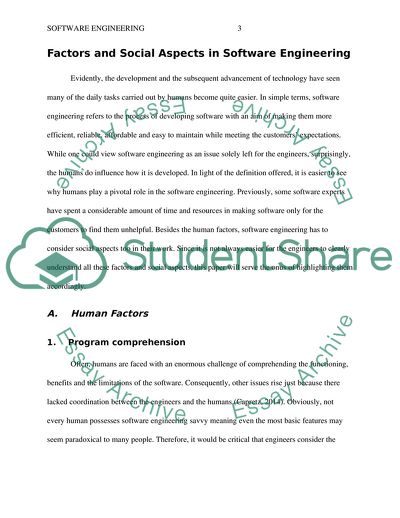Cite this document
(Human Factors and Social Aspects in Software Engineering Research Paper Example | Topics and Well Written Essays - 1750 words, n.d.)
Human Factors and Social Aspects in Software Engineering Research Paper Example | Topics and Well Written Essays - 1750 words. https://studentshare.org/information-technology/1855880-identify-human-factors-and-social-aspects-in-the-study-of-software-engineering
Human Factors and Social Aspects in Software Engineering Research Paper Example | Topics and Well Written Essays - 1750 words. https://studentshare.org/information-technology/1855880-identify-human-factors-and-social-aspects-in-the-study-of-software-engineering
(Human Factors and Social Aspects in Software Engineering Research Paper Example | Topics and Well Written Essays - 1750 Words)
Human Factors and Social Aspects in Software Engineering Research Paper Example | Topics and Well Written Essays - 1750 Words. https://studentshare.org/information-technology/1855880-identify-human-factors-and-social-aspects-in-the-study-of-software-engineering.
Human Factors and Social Aspects in Software Engineering Research Paper Example | Topics and Well Written Essays - 1750 Words. https://studentshare.org/information-technology/1855880-identify-human-factors-and-social-aspects-in-the-study-of-software-engineering.
“Human Factors and Social Aspects in Software Engineering Research Paper Example | Topics and Well Written Essays - 1750 Words”. https://studentshare.org/information-technology/1855880-identify-human-factors-and-social-aspects-in-the-study-of-software-engineering.


